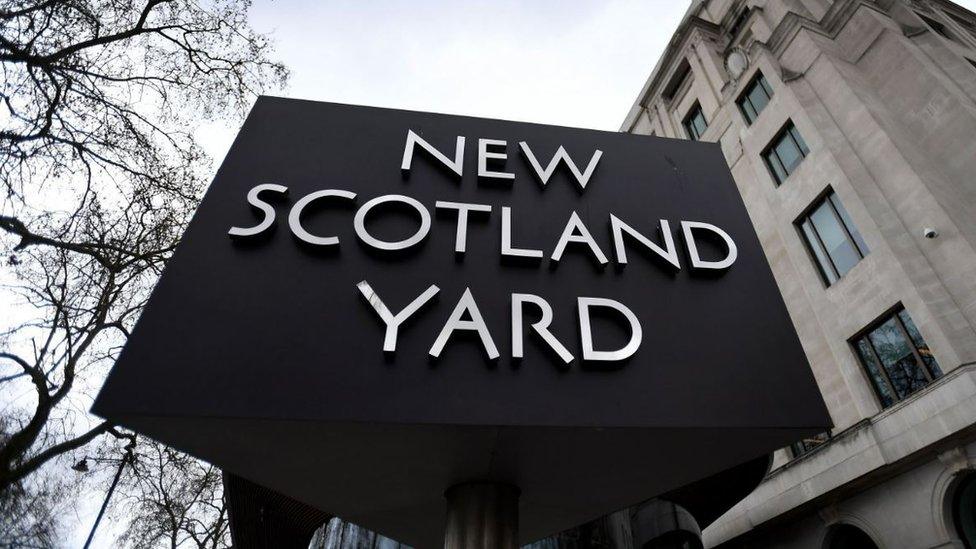Photographer Rankin reflects on his career and charity work
- Published

"I was very angry that the doctors didn't let me die. Now it's different, I know the reason I'm still alive," Patricia Lefranc, who is pictured here with Rankin, says in the photographer's new fashion 'look book'
Over the last 20 years, British photographer Rankin has profiled the world's most famous people ranging from David Bowie to the late Queen Elizabeth II. Supermodels and fashion shoots helped make his fortune. But it is charity projects that continue to keep him grounded.
Rankin, who was once labelled a 'bad boy' celebrity photographer, external, has mellowed since the Britpop heydays of the noughties and becoming a father. In an interview with the BBC, the Glasgow-born creative reflected on his journey from a working class background to the dizzying heights of fame.
"When my kid was born, and they started to grow up, I was very concerned that I needed to correct that balance of having this incredible job where you do get paid extraordinary amounts of money to do what you love. You need to balance the art of giving something back."
Rankin, full name John Rankin Waddell, has used his profile to support numerous charities ranging from women's health issues and combating plastic waste, to recognising the contributions of NHS workers.
His latest campaign is for the Acid Survivors Trust International (ASTi) where his images are used in the book 'Tear Couture', external which aims to bring attention to the continued risk of acid attacks as a form of gender-based violence.
ASTi, which counts the Princess Royal as its patron, estimates that more than 10,000 attacks take place globally each year, mostly on women and children. The charity found a large proportion occur in South Asian countries where garment and jewellery industries operate.
Anecdotal evidence shows, external attacks using corrosive liquids of hydrochloric, sulphuric and nitric acid occur at higher rates in locations where these substances are easily accessible, and where factories use acids in their manufacturing processes.
Some 710 acid attacks were recorded in England and Wales last year, an increase from 421 in 2021, according to ASTi which compiled the data by submitting a Freedom of Information (FOI) request to 43 police forces.
"Some days, I just cry"
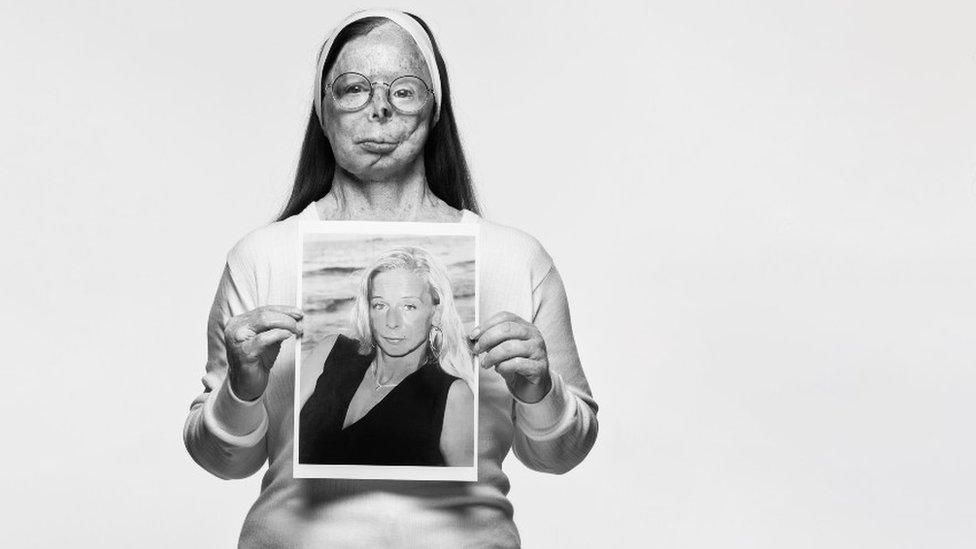
"People stare at me and mock me for my appearance," model Patricia Lefranc says. She is pictured here sharing a new campaign shot by Rankin, aimed at raising awareness around the link between the fashion industry and acid attacks
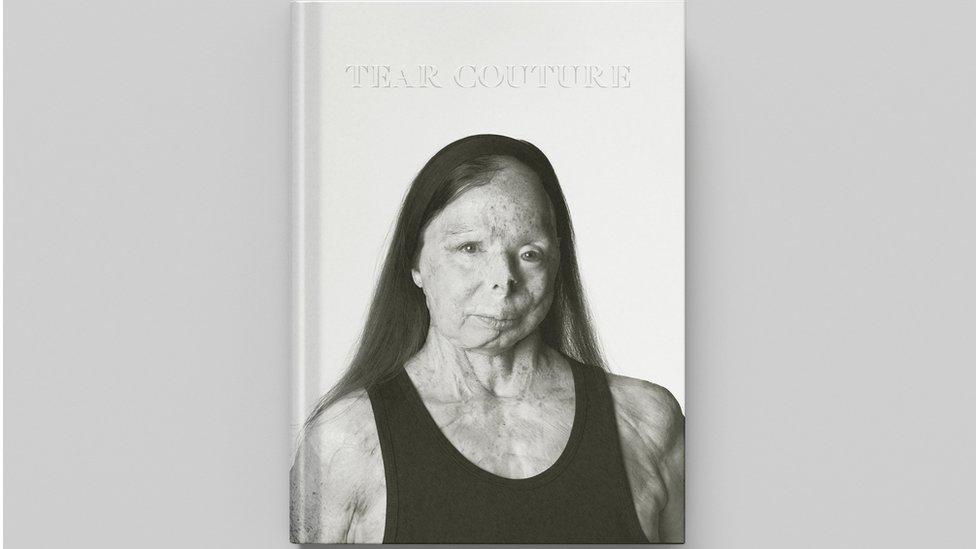
A look book is a fashion industry guide to the latest styles and fabrics. There are microscopic tears that have been turned into an immersive virtual reality experience where users can listen to survivors' testimonials
Rankin said taking on the ASTi charity project adds to his body of work in rethinking beauty standards.
The Belgian activist 59-year-old Patricia Lefranc, his model, has undergone countless surgeries after an ex-lover threw sulphuric acid on her. Few acid attack victims are willing to be photographed.
"I look at these pictures of Patricia and I think they're beautiful," Rankin told the BBC. "I want to empower her through those pictures. She was very brave in showing me how extensive her acid attack was."
"You have to have an empathy for anybody that's in front of the camera. It can be rather daunting," he added. "I'm not taking something from them, I'm making something with them together. That's how I approach every single picture I take."
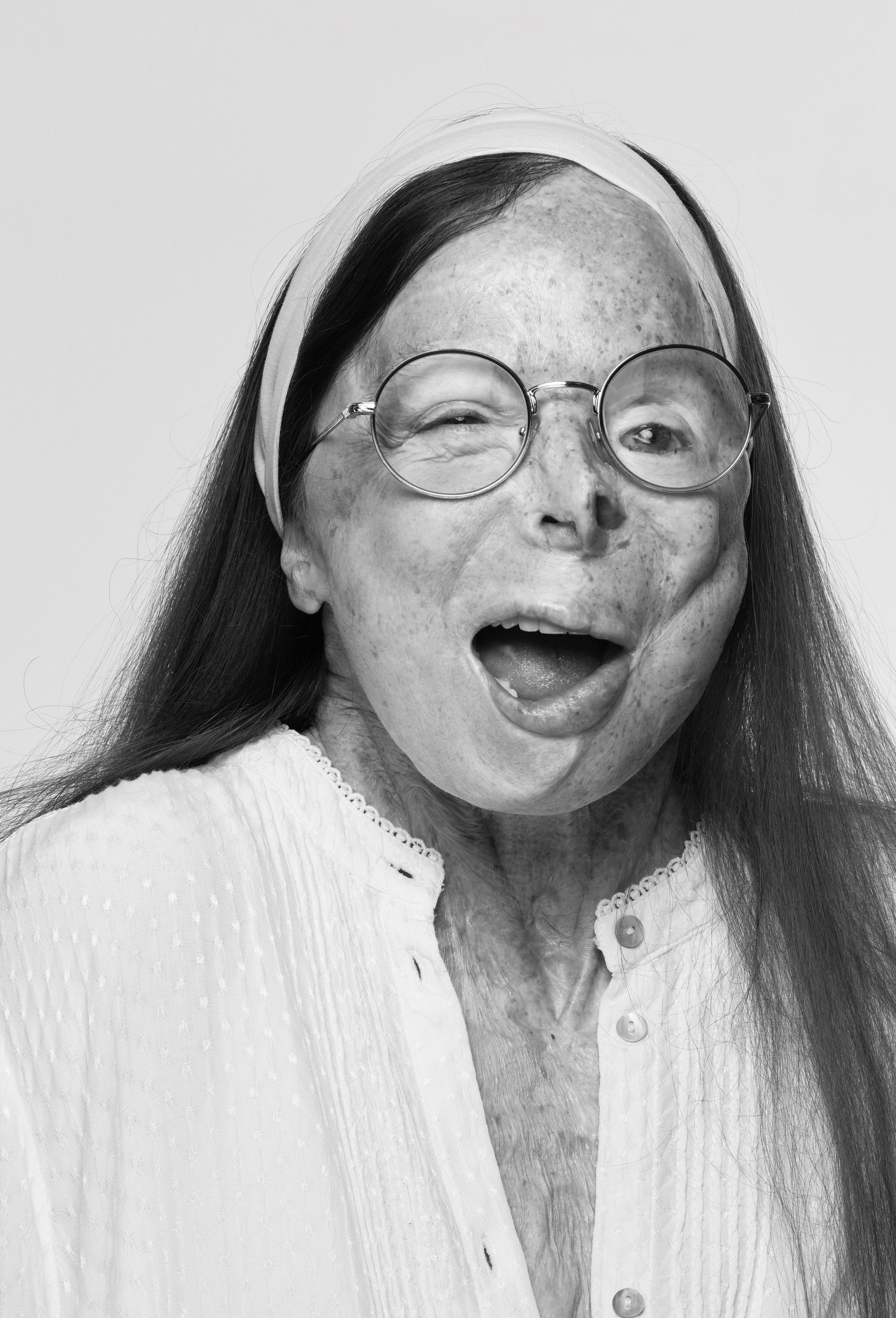
The Belgian activist and author was kept in an artificial coma for three months after an ex-lover threw sulphuric acid on her in 2009. He was later found guilty of attempted murder and jailed for 30 years
"My idea of beauty was very influenced by growing up photographing beautiful people all the time," Rankin admits.
"So to challenge that, which I've been doing since the early '90s, I felt like it was my duty to not just buy into the beauty of the beauty industry or the movie industry. It's to buy into my own version of that."
The 57-year-old said he wants to be able to "take pictures that are unexpected and turn people's heads".
"I'm trying to change the whole idea of what is beauty. That is the kind of thing that you're aiming for with these types of pictures".
Rankin does not take a personal fee for charity work, instead using an expenses-based approach. Reflecting on his success, Rankin said photography remains his favourite medium.
"I own an ad agency. I've directed movies, I've made commercials, but I come back to photography and it's the thing that I love the most."
He warns that younger people need to realise the industry has become even tougher in a digital age where everyone has a camera in the form of a smartphone.
"It's a very difficult career to manage," he said. "You've got to reinvent yourself again and again and again."
"You've got to remain current and it is a struggle. You have to kind of sacrifice quite a lot in your working life. I don't think that's changed."
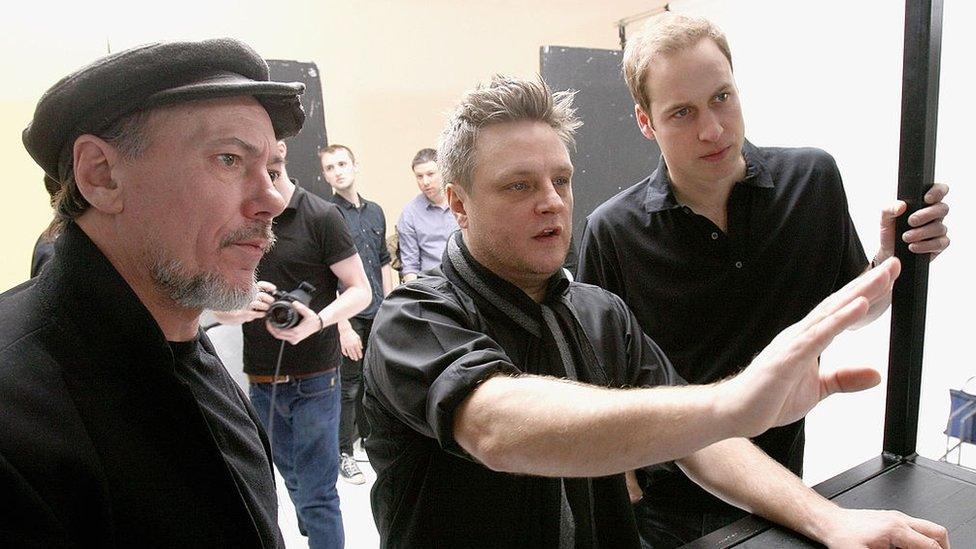
Jeff Hubbard, a formerly homeless man who was helped by the charity Crisis, worked with Rankin to take a portrait of Prince William for the 'A Positive View' exhibition at Somerset House in March 2010
Rankin also holds the honour of having photographed all the top royals including an iconic image of Queen Elizabeth II, external marking her Golden Jubilee. At the time, he said in an interview that he worked hard to get her to smile.
Last year, he photographed King Charles III for the Big Issue magazine which helps the homeless and shared that the monarch was "delightful to photograph and it was very easy to make him laugh".
Below is a selection of images from charity campaigns Rankin considers close to his heart.
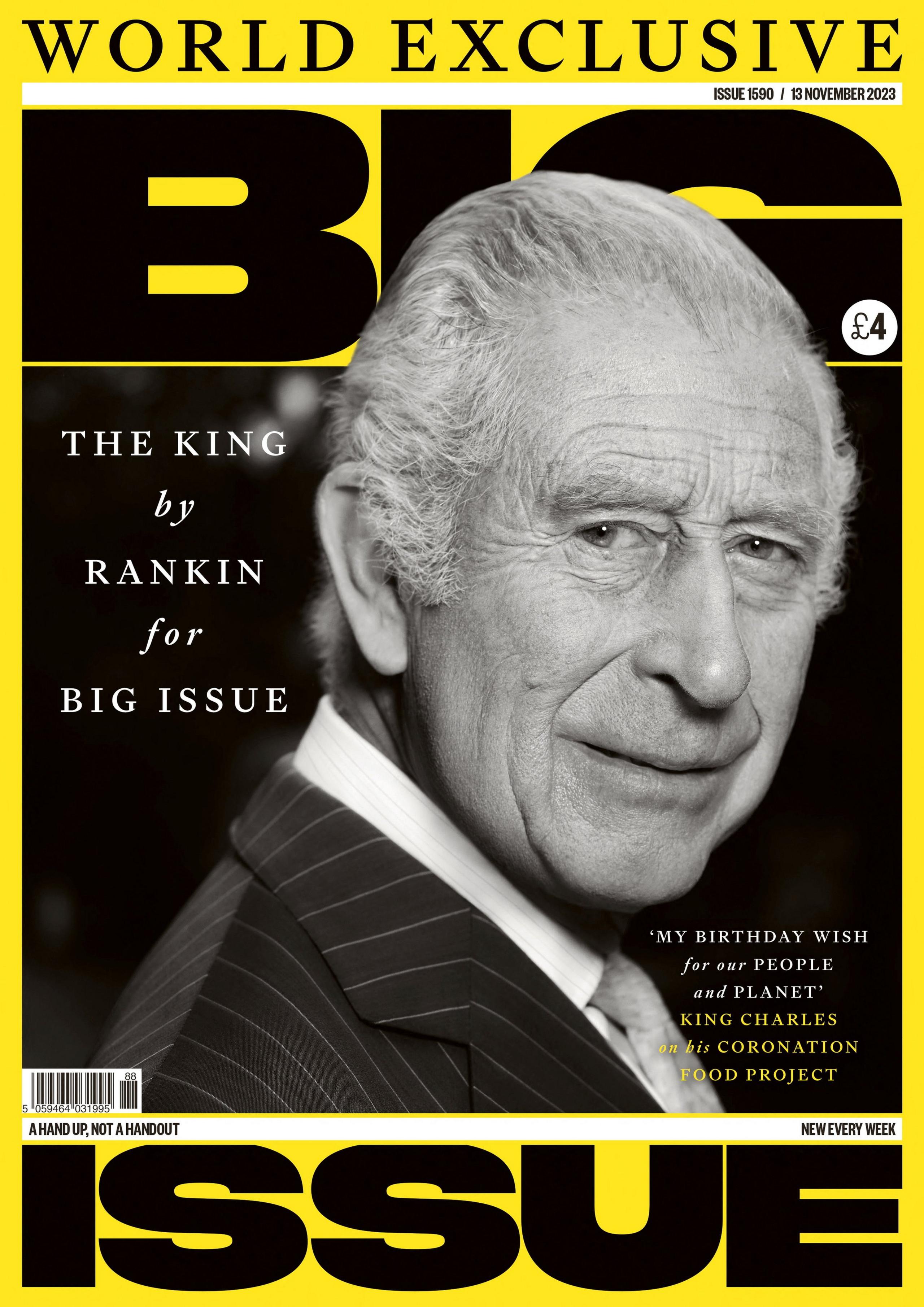
King Charles III was photographed for the Big Issue to mark his 75th birthday and highlight his Coronation Food Project which addresses the growing problem of food affordability and tackling the widespread waste of perfectly good food
"I really love that picture because I feel there's a resilience to the image that maybe people haven't seen before. And I think what I'm always looking for is the person behind the Crown, not the Crown.
"I was looking for the person who has been in the wings and has that resilience and has got an opinion," Rankin told the BBC.
"To be really honest, I think we need some leaders like that in our lives."
![Cambodian genocide survivor Sokphal Din BEM by Rankin for [Extra]Ordinary Portraits competition in advance of Holocaust Memorial Day 2023](https://ichef.bbci.co.uk/ace/standard/758/cpsprodpb/11023/production/_132376696_resize4holocaustmemorialdatytrust2022rankin-1.jpg)
A shot of Cambodian genocide survivor Sokphal Din BEM by Rankin for the [Extra]Ordinary Portraits competition ahead of Holocaust Memorial Day which was held on 27 January 2023
Cambodian genocide survivor Sokphal Din BEM had a way of looking at the lens "as though he was reassuring the audience it was OK to talk about such tragedies," Rankin said in an interview for the Holocaust Day Memorial Trust, external.
For the charity, Rankin made five images: four of men and women who survived the Holocaust or genocide, and one of the teddy bear who accompanied Holocaust survivor, John Hajdu MBE, through the Budapest ghetto.

In 2008 and 2009, Rankin travelled with Oxfam to the war-torn eastern provinces of the Democratic Republic of Congo. The photo project aimed to highlight the humanity of people caught in the middle of disease and malnutrition
"I wanted my portraits to do something different. The West has been anesthetised to traditional pictures of disaster zones," Rankin said in a 2010 interview with Oxfam, external.
"My style of portraiture is always about bringing people out of themselves, getting them to share something. I chose to photograph the people against a stark white background instead of in their physical environment. The expressions in their eyes and on their faces - their humanity - was what I wanted people to notice and relate to."
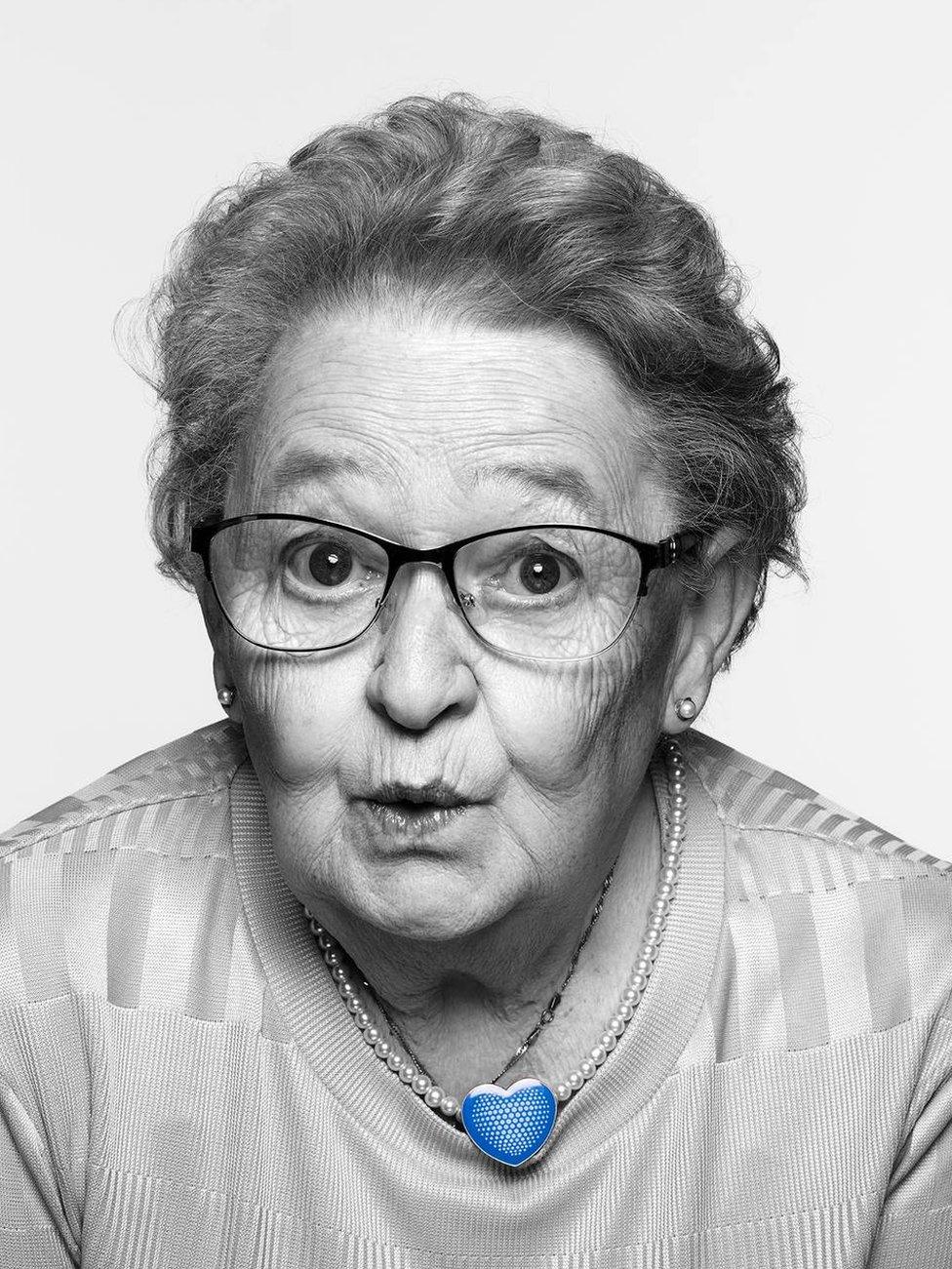
Beryl Fairclough, 76, was the brains behind Barnsley Hospital Charity's fundraising dream team 'the Sensational Six', who use their unmatched knitting skills to raise thousands for new NHS equipment, facilities and services locally
"You don't realise the scale of support that's out there - they fund research and new technologies, accommodation and support for patients, and extra services so more of us can access better care," Rankin said about his exhibition, external celebrating 75 years of NHS charities.
"I used to work in the NHS but honestly had no idea, and it really has been eye opening."

Performance was one of Rankin's biggest projects where he photographed 150 performers and members of the West End to showcase the talent and resilience of London's theatres as it emerged from a devastating pandemic shutdown

In 2017 Rankin was a patron of Sightsavers and snapped children pretending to be a celebrity who had donated sunglasses for a charity auction, including Sarah Jessica Parker, Sir Michael Caine, Liam Gallagher and Lewis Hamilton

Therapy Huskies which provide end of life care to patients were among the 14 different service 'dogs with jobs' that Rankin photographed for the Kennel Club Charitable Trust last year and exhibited at the Saatchi Gallery
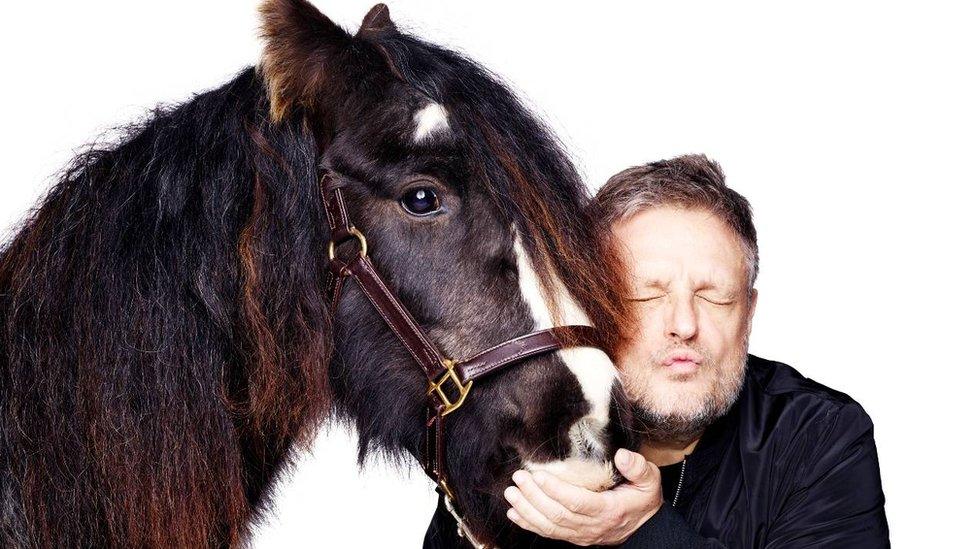
Rankin loves animals and took this self-portrait with Blue Cross horse, Splodge. Celebrities such as comedian Jimmy Carr posed with their pets for a series marking the animal welfare charity's 120th anniversary in 2021
Related topics
- Published27 November 2023

- Published15 November 2023

- Published19 October 2023
